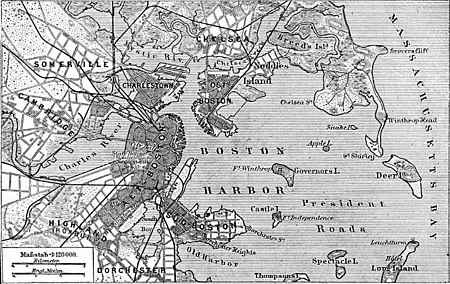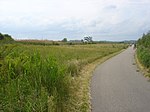Columbia Point, Boston
Boston Harbor peninsulas and former islandsColumbia Point, BostonNeighborhoods in Boston

Columbia Point, in the Dorchester neighborhood of Boston, Massachusetts sits on a peninsula jutting out from the mainland of eastern Dorchester into the bay. Old Harbor Park is on the north side, adjacent to Old Harbor, part of Dorchester Bay. The peninsula is primarily occupied by Harbor Point, the University of Massachusetts Boston, the John F. Kennedy Presidential Library and Museum, the Edward M. Kennedy Institute for the United States Senate, and a complex at the former Bayside Expo Center, Boston College High School, and the Massachusetts Archives. The Boston Harborwalk follows the entire coastline.
Excerpt from the Wikipedia article Columbia Point, Boston (License: CC BY-SA 3.0, Authors, Images).Columbia Point, Boston
Mount Vernon Street, Boston Dorchester
Geographical coordinates (GPS) Address Nearby Places Show on map
Geographical coordinates (GPS)
| Latitude | Longitude |
|---|---|
| N 42.313719444444 ° | E -71.033436111111 ° |
Address
University of Massachusetts Boston
Mount Vernon Street 150
02125 Boston, Dorchester
Massachusetts, United States
Open on Google Maps







